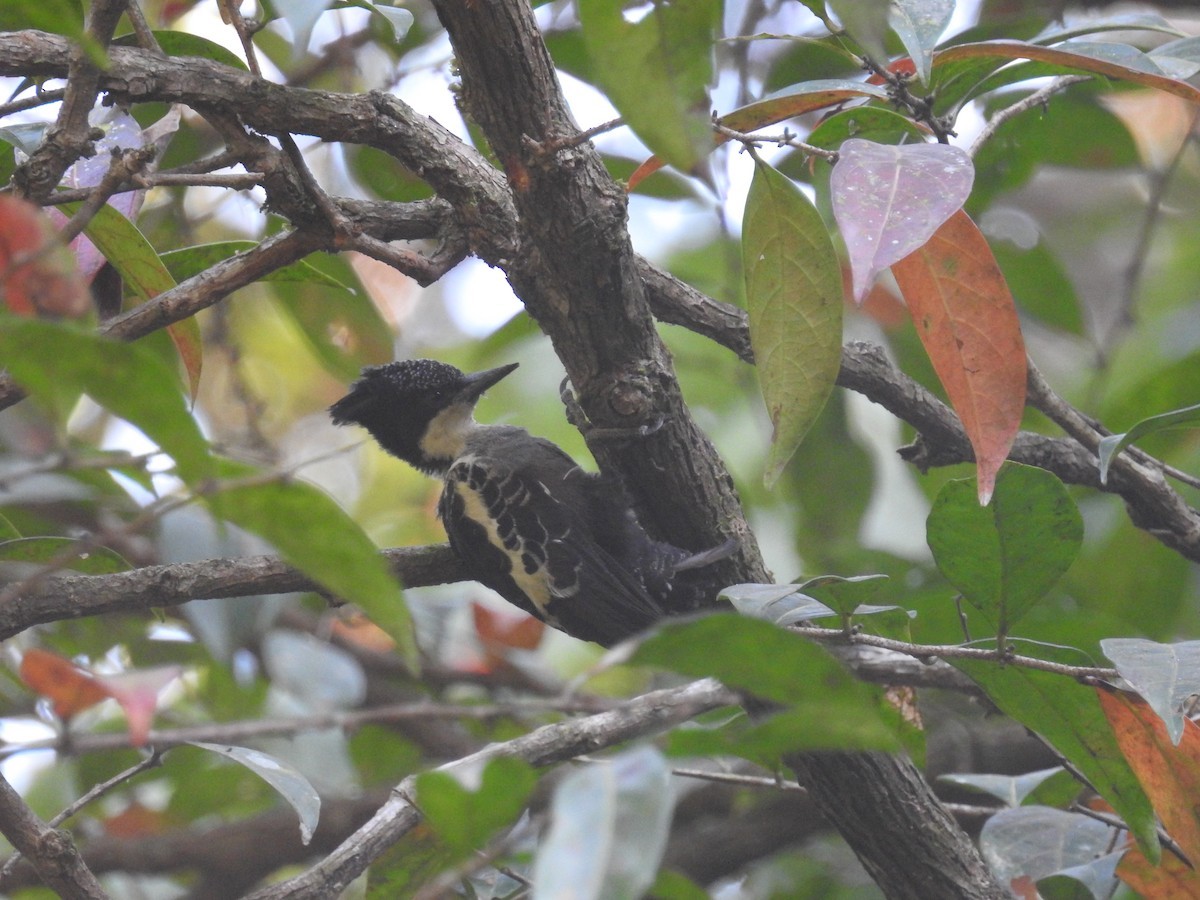Heart-spotted Woodpecker
A species of Large-crested Woodpeckers Scientific name : Hemicircus canente Genus : Large-crested Woodpeckers
Heart-spotted Woodpecker, A species of Large-crested Woodpeckers
Botanical name: Hemicircus canente
Genus: Large-crested Woodpeckers
Content
Description General Info
 Photo By Ashwin Viswanathan
Photo By Ashwin Viswanathan Description
A small, uniquely shaped, black and buff woodpecker with a large crest making the head look large for the short body and tail. Both males and females are predominantly black with heart-shaped black spots on white shoulders with broad white scapular patches and barring of flight feathers. The female has the forehead and crown buffy white while it is black on males. The throat is whitish and the underparts are dark olive grey. A tuft of feathers on the back are specialized and are lipid rich which causes the feathers to stick together in preserved specimens. These special feathers or "fat quills" sometimes make the rump feathers appear buff and may be a form of "cosmetic colouration" and the secretion is said to have a pleasant smell but the functional significance is unknown. 
Size
16 cm
Nest Placement
Cavity
Feeding Habits
Heart-spotted Woodpecker primarily feeds on ants, termites, larvae, and insects, found by foraging alone or in pairs on tree trunks and twigs, often within mixed-species groups. Exhibits agile movements along branches, gleaning and pecking with occasional hammering, and has unique sexual dimorphism hinting at different foraging behaviors.
Habitat
The heart-spotted Woodpecker is commonly found in moist, dense deciduous and evergreen forests, including forest edges and secondary growth areas. They exhibit a particular preference for habitats with bamboo and are also frequent in coffee and teak plantations within western parts of their range. These birds inhabit lowland regions, thriving in areas with a mix of forest types that offer diverse feeding and nesting opportunities.
Dite type
Insectivorous
General Info
Feeding Habits
Bird food type
Behavior
These woodpeckers forage in pairs, sometimes joining mixed-species foraging flocks. They fly from tree to tree in a sharply bounding flight giving a head-heavy appearance. They forage on thin branches and call often. They feed mainly on insects under bark but have been known to peck the pods of Cassia fistula to obtain insect larvae. The calls include a sharp twee-twee-twee (duet call) sometimes leading to a trill of several notes, a nasal ki-yeew and repeated su-sie calls. They drum infrequently during the breeding season, mainly during winter and before the Monsoons. The nest is bored in a dead branch with a narrow 3 to 4 cm diameter opening and the tunnel going down obliquely about 20 cm before widening into a chamber. Nests may sometimes be built in fence posts. The usual clutch is 2 or 3 eggs, which are unmarked white. Ticks of the species Haemaphysalis spinigera have been noted on these birds. 
Distribution Area
Its natural habitat is subtropical or tropical moist lowland forests. They are found in the Himalayan forests of India, and extend into Bangladesh, Myanmar, Thailand, Laos, Cambodia and Vietnam. Within India, they are also found in the Western Ghats and the forests of central India. A subspecies cordatus based on the description by Thomas C. Jerdon from a specimen from the Western Ghats is not considered distinct and the populations differ slightly in plumage colour and vary clinally in size (the northern birds being larger than those closer to the equator). 

 Photo By Ashwin Viswanathan
Photo By Ashwin Viswanathan